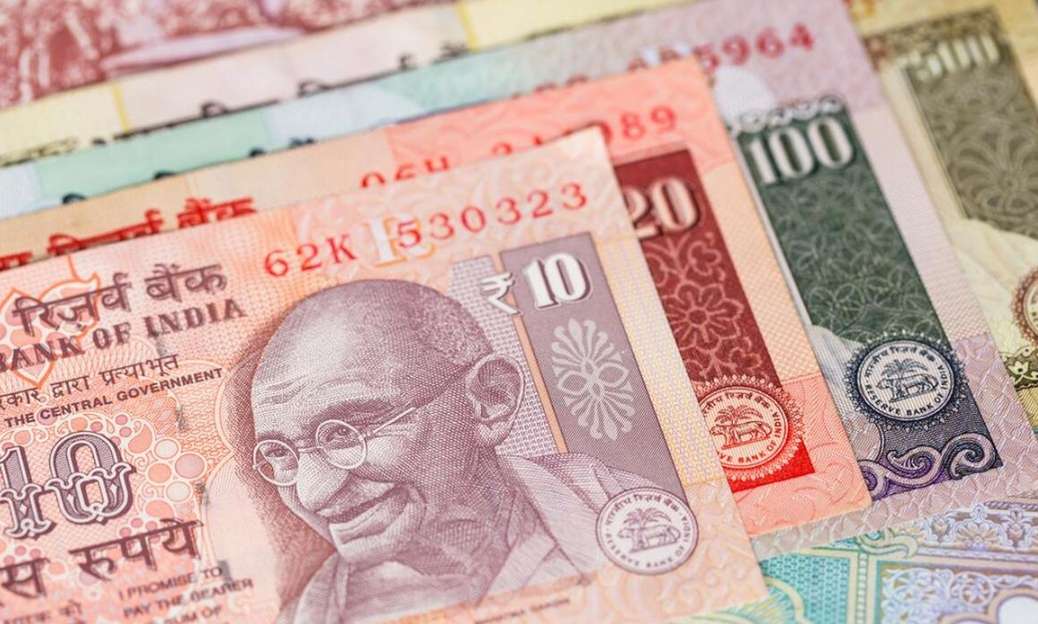Record Forex Interventions by India's Central Bank
Advertisements
Last week, the Reserve Bank of India (RBI) made headlines across the financial markets by cutting the repo rate by 25 basis points to 6.25%—the first decrease since May 2020. This move has sparked a wave of speculation regarding the RBI's future monetary policy amidst rising concerns over inflation and economic stability. Investors are increasingly wondering whether the central bank will prioritize economic growth over the rupee’s depreciation.
In the wake of the rate cut, the Indian rupee experienced significant fluctuations, depreciating against the US dollar and reaching new lows in the weeks leading up to the cut. Faced with these pressures, the RBI seemed to have shifted its focus, as analysts noted that more aggressive economic measures may be warranted given the easing inflation pressures. Most notably, recent tax policies enacted by the US government have resulted in a stronger dollar, further exacerbating the rupee's struggles.
On February 10, the RBI took immediate action to stabilize the rupee by implementing forex interventions after the currency fell to unprecedented lows. As a result, the rupee rebounded temporarily, bolstered by the RBI's actions to curb speculative attacks against it.
In an unprecedented move, the RBI intervened in the foreign exchange market for two consecutive days to mitigate the impact of bearish speculations against the rupee. This intervention caught many investors off-guard as the new RBI Governor, Sanjay Malhotra, had previously hinted at a non-interventionist approach, allowing the rupee to float freely. Since Malhotra took office in December of the previous year, the rupee had already depreciated by 2% against the dollar. His public statements indicated a focus on maintaining market efficiency without applying excessive pressure.
According to insiders, the RBI has been rigorously monitoring the currency market’s open positions, indicating a readiness to intervene aggressively to prevent the accumulation of speculative short positions. However, they clarified that there is no established target exchange rate for the rupee, and interventions will be made purely to curb volatility.
On February 11, following the RBI’s interventions, the rupee began to recover, gaining 0.68% against the dollar—the most significant increase since November 2022. This resurgence made it the top-performing Asian currency on that day, and the rupee's rise continued into the following trading sessions, resulting in a further appreciation of 0.5% to 86.4238. The exact scale of the RBI’s intervention remains undisclosed, but market analysts estimate that the combined efforts over two days could amount to a staggering $11 billion, setting a historical precedent in liquidity injection.

Financial institutions, such as Finrex Treasury Advisors, have speculated that the RBI's forex interventions could exceed even $10 billion within the same span. Ashhish Vaidya, head of the funds department at DBS Bank in Mumbai, noted the strategic soundness of the RBI’s actions and how the rupee’s subsequent rebound would help eliminate speculative pressures against it. This was particularly crucial given the impending meeting between Indian Prime Minister Narendra Modi and the US President—an event that could influence bilateral economic discussions.
Notably, the timing of the rupee’s recovery coincided with significant diplomatic engagements, suggesting that monetary stability could play a pivotal role in easing tensions regarding divergent monetary policies between India and the United States. Radhika Rao, a senior economist at DBS, emphasized that the RBI's decisive maneuvers would likely lead to short-term stability, though the long-term trajectory of the rupee would still be closely tied to US dollar movements in the global market.
Alongside forex intervention, the RBI was mindful that its actions could lead to a liquidity crunch within the Indian banking system. As of February 11, there was a growing liquidity shortfall in the banking sector, reaching approximately ₹2 trillion ($230 billion), compared to a surplus of ₹3 trillion from the previous year. Market analysts indicated that the mass sale of dollars by the RBI, driven by heavy outflows, largely contributed to this surge in liquidity concerns.
In response to this situation, on Wednesday, the RBI injected ₹2.5 trillion ($288.5 billion) into the market through variable rate reverse repos (VRR), marking one of the largest single-day injections seen in over a year. The allotment during this auction saw banks subscribe to nearly ₹1.94 trillion. Additionally, the RBI doubled its bond purchasing program for the week to ₹400 billion, further injecting liquidity into the system.
Dhiraj Nim, an economist at ANZ Research, pointed out that for the recent rate cuts to have a tangible effect on the economy, it was imperative for the Indian financial system to maintain sufficient liquidity. The necessity for ensuring vibrant liquidity channels was paramount, as excessive foreign exchange selling could jeopardize this aim. He concluded that, moving forward, it is less likely the RBI would engage in extensive forex interventions, as this would inevitably compromise domestic rupee liquidity—stressing that any intervention scale must align with prevailing monetary policy positions.
In summary, the RBI's recent actions present both a reactive and proactive approach towards stabilizing the rupee amid a complex interplay of domestic and international economic factors. As inflation concerns ease, the central bank appears to be navigating a precarious balance—prioritizing economic growth while managing currency depreciation pressures in a global economy that remains unpredictable and often unfavorable.
post your comment